Olivine
Type of resources
Topics
Keywords
Contact for the resource
Provided by
Years
Formats
Update frequencies
-
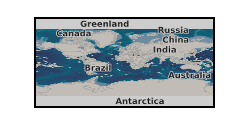
Microstructural data for rocks in the Shiant Isles Main Sill, presented as a function of stratigraphic height in the sill. The data were published: Holness et al. (2017) Contributions to Mineralogy and Petrology, 172:7. OI 10.1007/s00410-016-1325-x
-
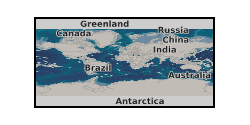
Data were collected on olivine hosted melt inclusions from four Icelandic eruptions: Stapafell, Haleyjabunga, Berserkjahraun and Heilagsdalsfjall. These data were released as part of the paper "The global melt inclusion C/Ba array: Mantle variability, melting process, or degassing?", published in Geochimica et Cosmochimica Acta, with doi: 10.1016/j.gca.2020.09.030. The data collected to place new constraints on the volatile content of the Icelandic mantle source. The data include measurement of C and H by Secondary Ion Mass Spectrometry, lithophile trace elements (including Ba and Nb) by Secondary Ion Mass Spectrometry, and measurement of major element composition of the melt inclusions and their olivine hosts by Electron Probe Microanalysis. The data were collected in 2017-2018, between Edinburgh (NERC ion probe facility) and Cambridge (EPMA).
-
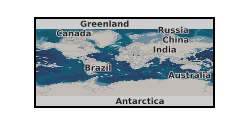
These data files represent simulations of hydrated cation vacancies in the mantle mineral forsterite (Mg2SiO4) undertaken using the CASTEP atomic scale simulation code (http://www.castep.org/). Results from these simulations allow the structure relative stability of different defect configurations to be compared. Three types of cation vacancies are considered (M1, M2 and Si) each decorated by hydrogen in order to charge balance the system. For M1 and M2 this results in multiple configurations (with hydrogen bonded to different oxygen atoms around the vacant site). For Si there is only one configuration as all four oxygen atoms are bonded to hydrogen for the charge neutral defect. For each configuration input files detail the initial atomic structure of the defect along with simulation parameters. Output files record the progress of the simulation, the final atomic structure, the energy of this structure, and various predicted properties of the structure. Only ASCII output data is included as binary data created by CASTEP is not intended to be portable, and can easily be recreated using the ASCII files.
-
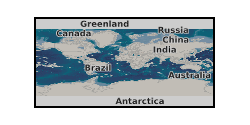
The dataset consists of elemental compositions determined for olivine and spinel from 13 ocean islands, including Azores, Balleny, Cook-Austral, Crozet, Cape Verde, Fernando de Noronha, Galapagos, Juan Fernandez, Marquesas, Society, Tristan-Gough, Tahiti, and Trindade). These samples were loaned from Sedgwick Museum, University of Cambridge and National History Museum, London, except the Galapagos samples provided by D. Geist. Elemental compositions determined for three secondary standards (San Carlos olivine, MongOl olivine, and NHNM164905 augite) are also included in the dataset. The data were acquired using a Cameca SX100 electron microscope at the Department of Earth Sciences, University of Cambridge, in June, July, August and November 2021. The elements analysed include Mg, Si, Fe, Al, Ca, P, Cr, Mn, and Ni in olivine, and Mg, Si, Fe, Al, Ca, Cr, Mn, and Ti in spinel. Data acquired from each analysis were saved in four txt files, which are for oxide concentrations, elemental concentrations, standard deviation, and detection limit, respectively. The data for ocean island samples were used to calculate olivine crystallisation temperature and mantle potential temperature based on an aluminium-in-olivine thermometer and modelling of mantle melting. All data collected within the project duration are in this dataset.
-
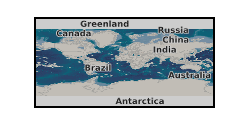
Experimental mechanical data for single crystal shear experiments. Grant abstract: In 2011, NERC began a scoping exercise to develop a research programme based around deep Earth controls on the habitable planet. The result of this exercise was for NERC to commit substantial funding to support a programme entitled "Volatiles, Geodynamics and Solid Earth Controls on the Habitable Planet". This proposal is a direct response to that call. It is widely and generally accepted that volatiles - in particular water - strongly affect the properties that control the flow of rocks and minerals (their rheological properties). Indeed, experiments on low-pressure minerals such as quartz and olivine show that even small amounts of water can weaken a mineral - allowing it to flow faster - by as much as several orders of magnitude. This effect is known as hydrolytic weakening, and has been used to explain a wide range of fundamental Earth questions - including the origin of plate tectonics and why Earth and Venus are different. The effect of water and volatiles on the properties of mantle rocks and minerals is a central component of this NERC research programme. Indeed it forms the basis for one of the three main questions posed by the UK academic community, and supported by a number of international experts during the scoping process. The question is "What are the feedbacks between volatile fluxes and mantle convection through time?" Intuitively, one expects feedbacks between volatiles and mantle convection. For instance, one might envisage a scenario whereby the more water is subducted into the lower mantle, the more the mantle should weaken, allowing faster convection, which in turn results in even more water passing into the lower mantle, and so on. Of course this is a simplification since faster convection cools the mantle, slowing convection, and also increases the amount of volatiles removed from the mantle at mid-ocean ridges. Nevertheless, one can imagine many important feedbacks, some of which have been examined via simple models. In particular these models indicate a feedback between volatiles and convection that controls the distribution of water between the oceans and the mantle, and the amount topography created by the vertical movement of the mantle (known as dynamic topography). The scientists involved in the scoping exercise recognized this as a major scientific question, and one having potentially far reaching consequences for the Earth's surface and habitability. However, as is discussed in detail in the proposal, our understanding of how mantle rocks deform as a function of water content is remarkably limited, and in fact the effect of water on the majority of mantle minerals has never been measured. The effect of water on the flow properties of most mantle minerals is simply inferred from experiments on low-pressure minerals (olivine, pyroxenes and quartz). As argued in the proposal, one cannot simply extrapolate between different minerals and rocks because different minerals may react quite differently to water. Moreover, current research is now calling into question even the experimental results on olivine, making the issue even more pressing. We propose, therefore, a comprehensive campaign to quantify the effect of water on the rheological properties of all the major mantle minerals and rocks using a combination of new experiments and multi-physics simulation. In conjunction with 3D mantle convection models, this information will allow us to understand how the feedback between volatiles and mantle convection impacts on problems of Earth habitability, such as how ocean volumes and large-scale dynamic topography vary over time. This research thus addresses the aims and ambitions of the research programme head on, and indeed, is required for the success of the entire programme.
-
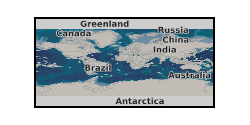
High precision electron-probe analysis of olivine compositions from a set of ocean island basalts. Accompanied by thin section scans and QEMSCAN (Quantitative Evaluation of Minerals by SCANning) compositional maps.
-
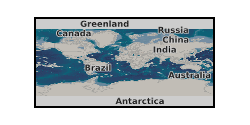
Electron backscatter diffraction was used to quantify grain boundary misorientations in experimental samples doped with deuterium-enriched water. The same samples were subsequently studied with nanoSIMS to look for boundary enrichment of D2O. Grain boundary misorientation data were collected using EBSD to test the possibility of misorientation angle dependence on measured D2O concentrations. No clear misorientation dependence was observed. Folders names include the name of the PDRA who collected the data. Data are images, text files (ctf), and other file formats that can be opened using Oxford Instruments EBSD software. Supporting EDS files are available on request
-
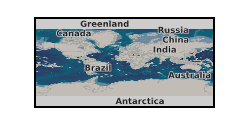
Mechanical datasets of a creep rig experiment which quantified grain boundary sliding in an olivine bicrystal sample. A single test was performed for 4 x 104 s at a maximum temperature of 1400 °C. The data from the experiment are presented in a spreadsheet of mechanical data (piston force and linear displacement per time and furnace temperature). A picture of the experimental geometry used and electron backscatter and graphs obtained from the mechanical data are included. The results showed that it is possible to simulate boundary sliding along bicrystal surfaces in a creep rig
-

EPMA (Electron probe microanalysis) major element analyses of clinopyroxene, olivine, amphibole and glass from lava and tephra samples of the 2021 Tajogaite eruption. LAICPMS (Laser Ablation Inductively Coupled Plasma Mass Spectrometry) trace element analyses of selected clinopyroxene from the eruption sequence.
-
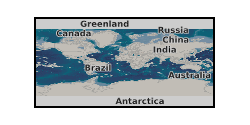
The mechanics of olivine deformation play a key role in long-term planetary processes, including the response of the lithosphere to tectonic loading or the response of the solid Earth to tidal forces, and in short-term processes, such as post-seismic creep within the upper mantle. Previous studies have emphasized the importance of grain-size effects in the deformation of olivine. Most of our understanding of the role of grain boundaries in the deformation of olivine is inferred from comparison of experiments on single crystals to experiments on polycrystalline samples, as there are no direct studies of the mechanical properties of individual grain boundaries in olivine. In this study, we use high-precision mechanical testing of synthetic forsterite bicrystals with well characterized interfaces to directly observe and quantify the mechanical properties of olivine grain boundaries. We conduct in-situ micropillar compression tests at high-temperature (700°C) on bicrystals containing low-angle (4• tilt about [100] on (014)) and high-angle (60• tilt about [100] on (011)) boundaries. During the in-situ tests, we observe differences in deformation style between the pillars containing the grain boundary and the pillars in the crystal interior. In the pillars containing the grain boundary, the interface is oriented at ∼ 45° to the loading direction to promote shear. In-situ observations and analysis of the mechanical data indicate that pillars containing the grain boundary consistently support elastic loading to higher stresses than the pillars without a grain boundary. Moreover, the pillars without the grain boundary sustain larger plastic strain. Post-deformation microstructural characterization confirms that under the conditions of these deformation experiments, sliding did not occur along the grain boundary. These observations support the hypothesis that grain boundaries are stronger relative to the crystal interior at these conditions. This data set is associated with the pre-print manuscript with the DOI: 10.22541/essoar.167979601.17867144/v1
 NERC Data Catalogue Service
NERC Data Catalogue Service